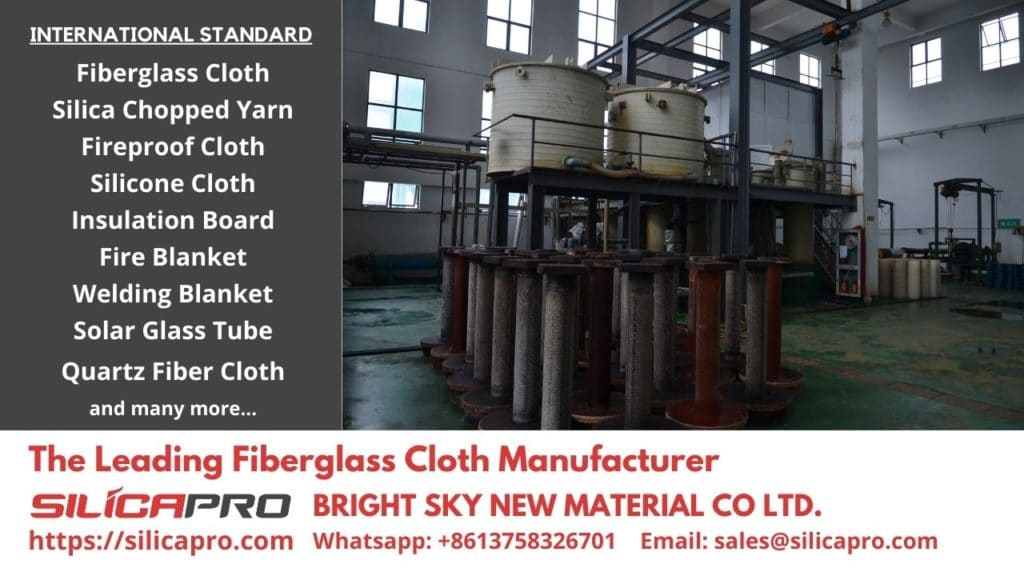
Fiberglass melting process refers to the stage in making glass fiber where the raw material, which is generally long glass fiber, is melted into a liquid. This process often occurs in a furnace which is capable of reaching very high temperatures to melt the glass fibers into liquid form.
This melting process is the first step in making fiberglass products. This is also a crucial stage in producing uniform and high-quality glass fiber. Therefore, this melting process contributes to the successful application of glass fiber in various industries.
Here’s everything you need to know about the process of making fiberglass.
Contents
What are the Advantages and Importance of the Fiberglass Melting Process?
The melting process allows the formation of glass fibers in various sizes and shapes. This provides flexibility in the design of the final product. The glass fibers produced through this process also have high tensile strength and good stiffness. This makes it suitable for use in applications that require strong materials.
The glass fiber material produced through this process tends to have high durability and resistance to pressure and loads so it lasts a long time. The advantages of this process also include its ability to be automated using the latest technology. This increases production efficiency, reduces costs, and ensures consistency in product quality.
The fiberglass produced through this process can also be used in a variety of applications, including construction, automotive manufacturing, the shipping industry, and more. Thus, the Fiberglass melting process makes an innovative contribution to meeting the needs of modern industry. Especially through developing new products and improving material performance in various applications.
What are the Important Stages in the Fiberglass Melting Process?
The melting process involves a series of important stages to form a liquid from long glass fibers. These stages create glass fibers that are uniform, strong, and meet the desired specifications. In modern industry, this process can be automated using computer software and other automation technologies. The following are the general stages in the process.
Preparation of Raw Materials
The main raw material in this process is long glass fiber. Glass fiber as the basic material for making fiberglass is usually prepared in sheet or roll form.
Mixing and Weighing
Before the melting process, glass fibers are prepared and mixed in the right amount and proportion. This requires careful weighing to achieve properties that meet the requirements of the final product.
Raw Material Heating
Long glass fibers are heated intensively using a furnace. The heating temperature must reach the melting point of glass fiber. This heating process aims to melt the glass fibers until they reach a liquid state.
Formation of Glass Fiber Liquid
The melted glass fiber liquid is then processed further to produce the desired shape. The use of a rotating disk or nozzle is usually used to form thin glass fibers.
Cooling and Hardening
After the forming process, the newly formed liquid glass fiber is cooled rapidly to restore its solid state. This cooling can be done using air flow or other cooling agents.
Cutting or Shaping the Final Product
Glass fibers that have gone through a process of melting, forming and cooling can then be cut into certain lengths or shaped according to the needs of the final product.
Fiberglass Melting Process Melts at What Temperature?
Glass fiber is usually made from materials such as silica or glass without metal. The melting point of glass fiber is generally much higher than the temperature generally used in the melting process. Glass fiber has a very high melting point, usually above 1,500 degrees Celsius (about 2,732 degrees Fahrenheit).
In the Melting process, a furnace is used to heat glass fiber until it reaches a temperature high enough to melt it into a liquid. Even though the furnace temperature can be very high, the glass fiber itself remains solid. Usually in the form of long, flexible fibers before being heated to their high melting point.
The temperatures used in this process may vary. Depends on the specific composition of the glass fiber used and manufacturer’s specifications. In general, the temperature in the fiberglass melting process ranges from 1,300 to 1,700 degrees Celsius (around 2,372 to 3,092 degrees Fahrenheit) depending on the type of glass fiber and the needs of the final product.
